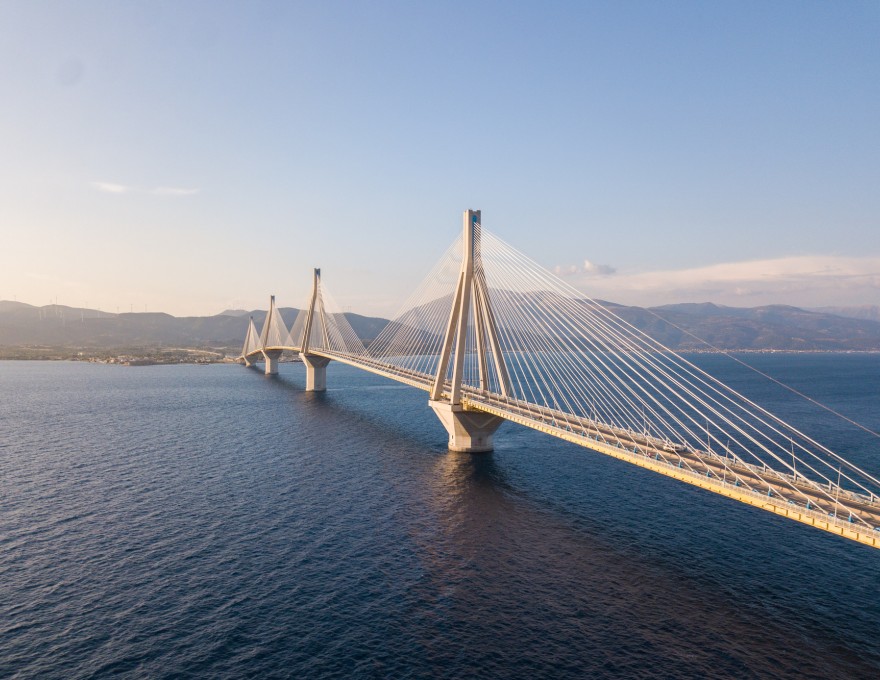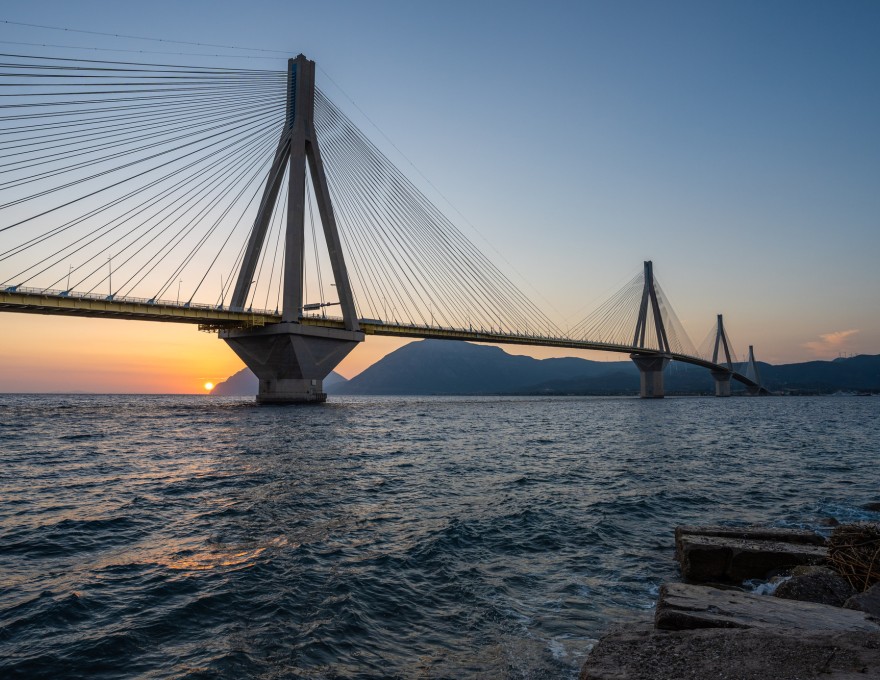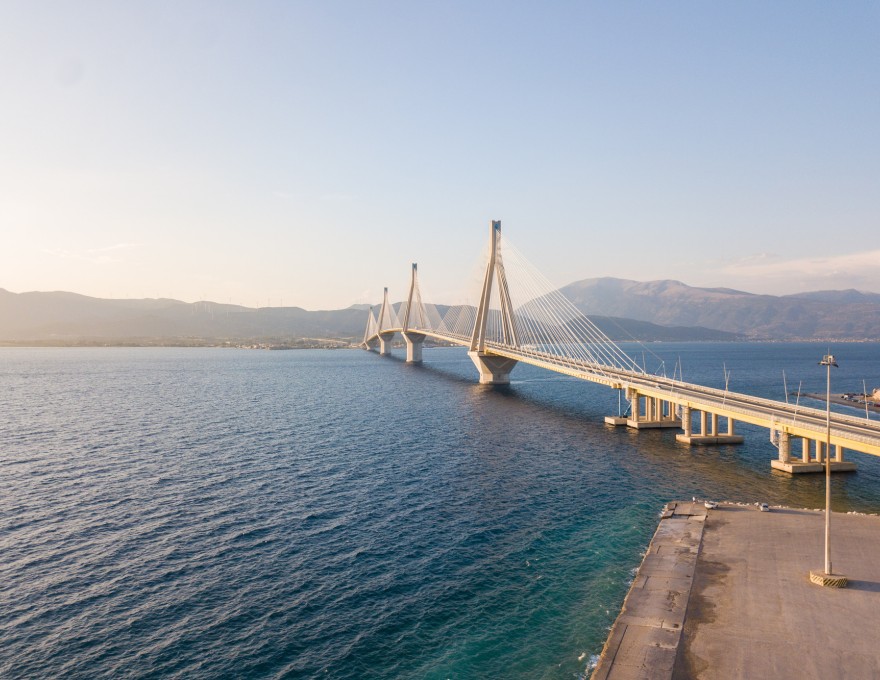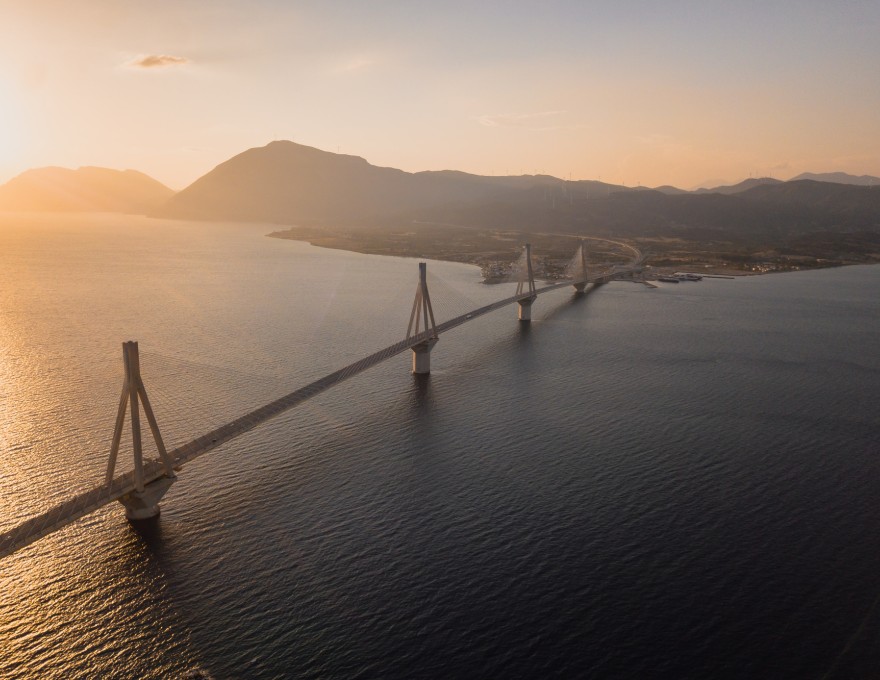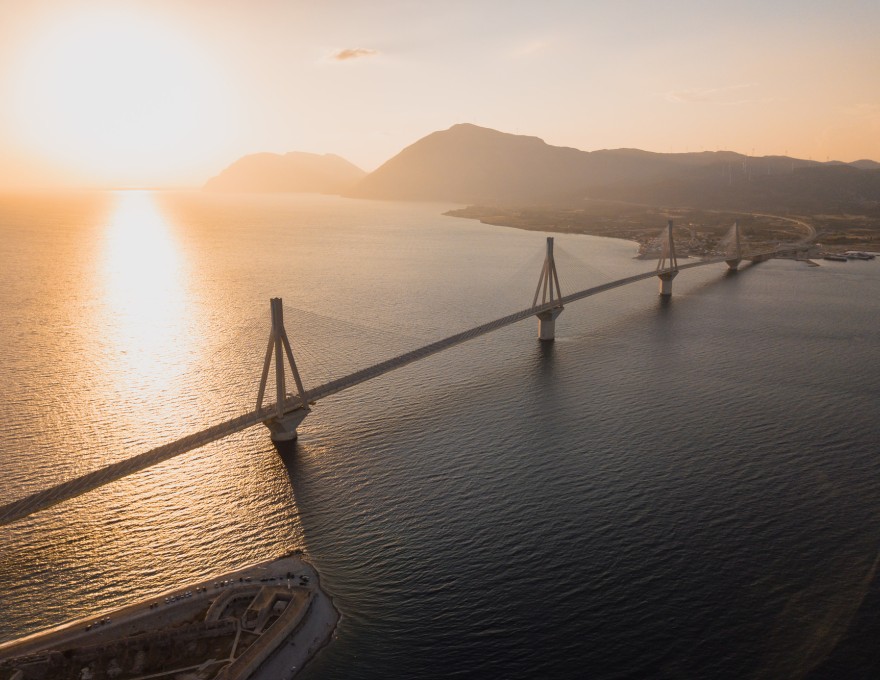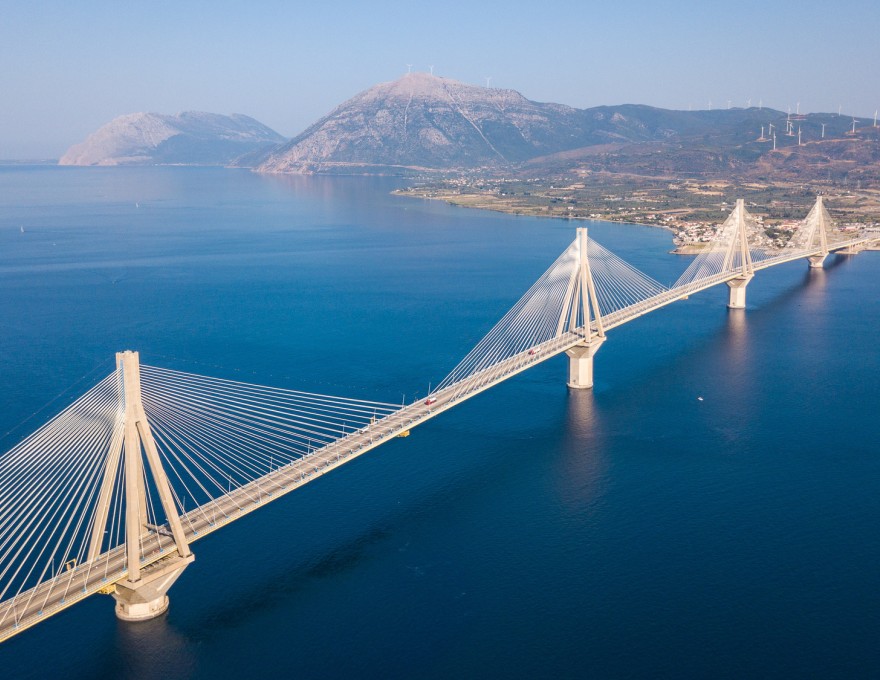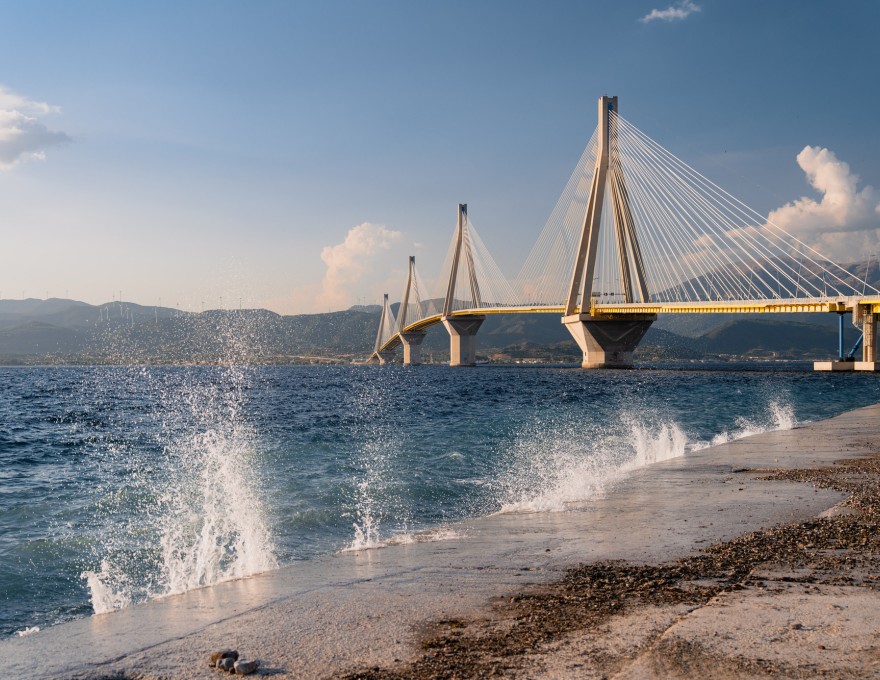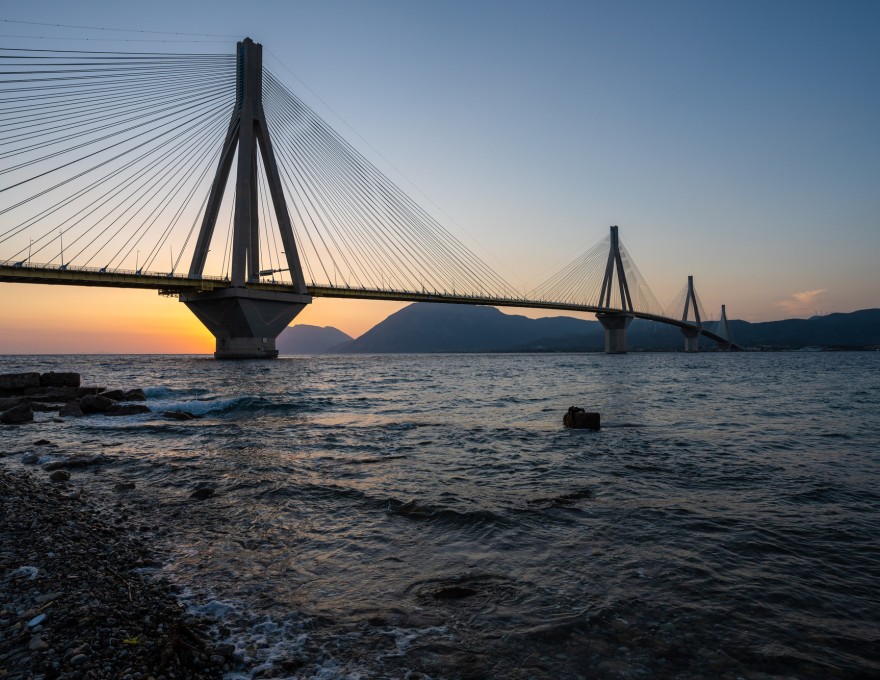Even though Greek statesman Charilaos Trikoupis’ vision in the late 19th century took more than 100 years to be realised, it eventually ended up in one of Greece’s most emblematic mega projects, the renowned Rio-Antirrio Bridge. Since 2004, the bridge connects the Peloponnese with the western mainland of Greece as the world's longest multi-span bridge, based on the cable deck length of 2252m.
Its engineering requirements were a complex project as it had to overcome all the adversities of the particular geophysical environment, including deep waters and absence of a rocky substrate, as well as the area’s intense seismic activity and strong to very strong winds.
Using pioneering methods and innovative interventions to arrive at an engineering masterpiece, the bridge has a total length exceeding 2,800m, with foundations of 90m in diameter, at a sea depth of up to 65m and with pillars from 145m to 165m high.
With a deck width of 27.2 meters, two traffic lanes, a safety lane and a sidewalk in each direction, the bridge cut the distance between the opposite lands by 40 minutes, contributing decisively to the economic and social development of Western Greece.
Its aesthetics are highly impressive, as it dominates the Gulf of Patras, in complete contrast to the two monumental fortresses of Rio and Antirrio, as if the past and history are conversing with the future and evolution.
Description
Features
Location
For further information click here.
Video

